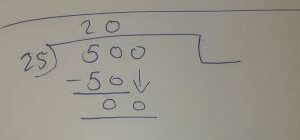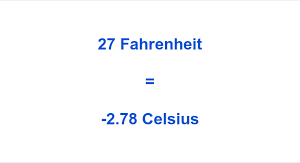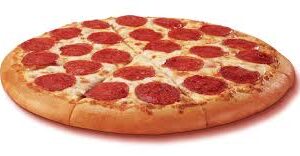Welcome 25 ml in tablespoons to the world of culinary measurements, where precision is key and a dash too much or too little can make all the difference in your recipe. Today, we’re diving into the realm of milliliters versus tablespoons, specifically focusing on how to get the most out of 25 ml. Whether you’re an aspiring chef, a seasoned home cook, or simply someone who enjoys experimenting in the kitchen, understanding accurate measurements is essential for creating delectable dishes that will leave taste buds dancing with delight. So grab your apron and let’s embark on this flavorful journey together!
Understanding Measurements: Milliliters vs. Tablespoons
When it comes to measurements in the culinary world, there are a plethora of units to keep track of. Two common units for measuring liquids are milliliters (ml) and tablespoons. Understanding the difference between these two can greatly enhance your cooking and baking skills.
Milliliters, abbreviated as ml, is a metric unit used to measure volume. It is often used in recipes that require precise measurements, especially when dealing with small amounts of liquid ingredients such as extracts or flavorings. Tablespoons, on the other hand, are a familiar unit of measurement in many kitchens. They provide a convenient way to measure larger quantities of liquid ingredients like oils or sauces.
The key distinction between milliliters and tablespoons lies in their respective sizes. One tablespoon is equivalent to approximately 15 ml. This means that if you need to convert from milliliters to tablespoons, you’ll need to divide the quantity by 15.
Understanding this conversion factor allows you to accurately adjust your recipe based on what tools you have available or your personal preference for using one unit over another.
Next time you come across a recipe that calls for 25 ml of liquid ingredient but only have tablespoons at hand, simply divide 25 by 15 (since one tablespoon equals approximately 15 ml). The result will be around 1.67 tablespoons – not an exact measurement but close enough for most purposes.
By grasping the difference between milliliters and tablespoons and knowing how they relate numerically, you can confidently navigate any recipe without feeling restricted by specific measurement units.
Now that we’ve covered the basics of understanding measurements involving milliliters and tablespoons let’s explore some practical tips and tricks for measuring liquids accurately in our next section!
The Importance of Accurate Measurements in Cooking and Baking
Accurate measurements are crucial when it comes to cooking and baking. Whether you’re following a recipe or experimenting with your own creations, precise measurements can make all the difference in achieving consistently delicious results.
In cooking, using the right amount of ingredients ensures that flavors are balanced and harmonious. Too much salt can overpower a dish, while too little baking powder can result in dense pancakes. Accurate measurements ensure that each ingredient is properly proportioned, contributing to the overall taste and texture of the final product.
Similarly, in baking, precision is key. Baking is often referred to as a science because even small variations in measurements can drastically affect the outcome. Imagine trying to bake a cake with an inaccurate amount of flour or sugar – it’s unlikely to turn out as light and fluffy as intended.
Not only does accurate measuring impact taste and texture, but it also affects presentation. For example, if you’re making cookies and don’t measure the dough correctly, they may spread too much on the baking sheet or end up different sizes.
To achieve accuracy in your measurements, invest in quality kitchen tools for measuring liquids such as measuring cups or spoons specifically designed for this purpose. These tools are calibrated for precise measurement conversions between milliliters (ml) and tablespoons.
When measuring liquids like water or milk in milliliters (ml), use a clear liquid measuring cup placed on a level surface for accurate readings at eye level. Pour slowly until you reach 25 ml exactly.
Remember that practice makes perfect when it comes to accurately measuring liquids! Be patient with yourself as you develop your skills over time.
By understanding how important accurate measurements are in cooking and baking, you’ll be well-equipped to create culinary masterpieces every time you step into the kitchen!
Converting 25 ml to Tablespoons
Converting measurements can sometimes be a bit tricky, especially when you’re dealing with different units like milliliters and tablespoons. If you find yourself needing to convert 25 ml to tablespoons, don’t worry! I’ve got you covered.
To start off, let’s clarify the conversion factor between milliliters and tablespoons. One tablespoon is approximately equal to 14.79 ml. So if we divide 25 ml by this conversion factor, we’ll get the equivalent in tablespoons.
Calculating it out, 25 ml divided by 14.79 ml per tablespoon gives us roughly around 1.69 tablespoons. Keep in mind that this is an approximate value since tablespoon measurements can vary slightly depending on where you are located.
When it comes to measuring liquids accurately in the kitchen, having the right tools is essential. You can use a liquid measuring cup or even a set of measuring spoons specifically designed for liquids.
If precision is important for your recipe, consider investing in a digital scale or a graduated cylinder for more accurate measurements.
Now that you know how to convert 25 ml into tablespoons and have some tips on how to measure liquids accurately, why not try experimenting with creative recipes? You could make small batches of salad dressings or sauces using exactly 25 ml as your measurement!
Whether you’re an experienced chef or just starting out in the kitchen, understanding conversions and accurate measurements will help elevate your cooking game. So next time you come across a recipe calling for milliliters but only have spoons at hand, no need to panic – just remember these simple conversion steps!
Remember: always double-check your calculations and adjust accordingly based on personal preference or specific recipe requirements
Common Kitchen Tools for Measuring Liquids
When it comes to accurately measuring liquids in the kitchen, having the right tools can make all the difference. Here are some common kitchen tools that you can use to measure liquids with precision.
First up is the trusty measuring cup. This essential tool comes in various sizes and is perfect for measuring larger quantities of liquid. Look for one with clear markings on the side so you can easily see how much liquid you’ve poured.
Another useful tool is a graduated cylinder. It may sound scientific, but this tall and narrow container is great for measuring smaller amounts of liquid, like 25 ml! Its precise measurements allow for accuracy when adding ingredients to your recipes.
A digital kitchen scale with a built-in liquid measurement function is also worth considering. This versatile tool allows you to weigh your liquids directly instead of using traditional volume measurements like tablespoons or milliliters.
If you prefer a more traditional approach, a set of measuring spoons will come in handy. These spoons usually include tablespoons, teaspoons, and milliliter measurements – perfect for those smaller quantities that need precise measurement.
Don’t forget about your senses! While not a physical tool per se, your eyesight and experience can help gauge approximate amounts without relying solely on measurements. For example, if a recipe calls for 25 ml of olive oil and you’re familiar with what that looks like in your favorite tablespoon – go ahead and eyeball it!
Having these common kitchen tools at hand will ensure that you can measure liquids accurately every time. So next time you’re cooking up something delicious in the kitchen, be sure to grab one (or all!) of these tools to get those measurements just right!
Tips for Measuring Liquids Accurately
When it comes to measuring liquids accurately, there are a few tips and tricks that can ensure you get the most precise measurements possible. Whether you’re working with 25 ml or any other amount, these tips will help you achieve culinary perfection.
Always use a clear measuring cup specifically designed for liquids. This will allow you to see the measurement lines clearly and avoid any guesswork. Additionally, make sure the cup is on a level surface before pouring in your liquid.
Next, when measuring small amounts like 25 ml, it’s important to pour slowly and be patient. Rushing can lead to spills or inaccurate measurements. Pour steadily until the liquid reaches the desired line on your measuring cup.
If accuracy is crucial for your recipe, consider using a scale instead of relying solely on volume measurements. A kitchen scale can provide precise weight measurements for liquids, eliminating any potential variations caused by different densities.
Another helpful tip is to measure at eye level. Holding the cup too high or too low can distort your perception of where exactly the liquid reaches on the measurement lines. By keeping it at eye level, you’ll have a more accurate view of your progress.
Remember that practice makes perfect! The more experience you gain in measuring liquids accurately, the better you’ll become at judging quantities without even needing to rely on specific measurements.
By following these simple tips for measuring liquids accurately – using a clear measuring cup designed for liquids,
pouring slowly and steadily,
considering weighing ingredients if precision is necessary,
measuring at eye level
and practicing regularly –
you’ll be able to confidently tackle recipes that call for 25 ml (or any other amount) without worrying about inaccuracies throwing off your culinary creations!
Creative Recipes Using 25 ml as a Measurement
Creative Recipes Using 25 ml as a Measurement
When it comes to cooking and baking, precision is key. And sometimes, all you need is a small amount of an ingredient to make a big impact on your dish. With just 25 ml at your disposal, the possibilities are endless! Here are some creative recipe ideas that utilize this measurement in unique ways.
1. Infused Oils: Add flavor to your dishes by infusing oils with herbs or spices. Heat 25 ml of olive oil over low heat and add ingredients like rosemary, garlic, or chili flakes. Let it simmer for a few minutes and then strain out the solids. This infused oil can be used to drizzle over salads, pasta dishes, or even roasted vegetables.
2. Homemade Salad Dressings: Forget store-bought dressings and whip up your own flavorful creations using 25 ml of vinegar or lemon juice as the base. Combine it with other ingredients like mustard, honey, herbs, or shallots for a delicious dressing that will elevate any salad.
3. Cocktail Mixers: Impress your guests by crafting unique cocktails with just 25 ml of various spirits and mixers. Try mixing vodka with cranberry juice and lime for a refreshing Cosmopolitan-inspired drink; or combine gin with elderflower liqueur and soda water for a light floral cocktail.
4. Mini Desserts: Who says desserts have to be large? Take advantage of the small measurement by creating mini versions of your favorite treats! Bake individual-sized cupcakes using only 25 ml of batter per cupcake; or make bite-sized cheesecake bites by dividing the filling into small molds.
5.
Bonus tip – Coffee Syrups: Give your morning coffee an extra kick by making homemade syrup flavors! Combine equal parts sugar (about 25 grams) and water (about 25 ml) in a saucepan over medium heat until dissolved.
Then add in flavor extracts such as vanilla, caramel, or hazelnut to create your own custom coffee syrup.
Conclusion
Conclusion
Understanding measurements and conversions in the kitchen is essential for accurate and successful cooking and baking. When it comes to converting milliliters to tablespoons, 25 ml can be a versatile measurement that adds just the right amount of flavor or liquid to your recipes.
By using common kitchen tools like measuring spoons or a graduated measuring cup, you can easily convert 25 ml into tablespoons. Remember that one tablespoon is equivalent to approximately 15 ml, so 25 ml would be around 1.67 tablespoons.
To ensure precise measurements, follow these tips: always use level spoonfuls when measuring liquids, hold the measuring utensil at eye level for accuracy, and pour liquids slowly and steadily into the measuring tool.
Now that you have a better understanding of how to measure with precision, don’t hesitate to get creative with recipes using 25 ml as a measurement! Whether you’re adding a splash of vanilla extract to your favorite dessert or incorporating flavorful oils into dressings or marinades, this small but mighty amount can make all the difference in enhancing taste profiles.
Remember that cooking is an art form where experimentation leads to exciting results. So go ahead and explore new possibilities by incorporating 25 ml into your culinary adventures!
In conclusion (Oops! We said we wouldn’t use this phrase), mastering accurate measurements will not only improve your cooking skills but also elevate your confidence in the kitchen. Embrace precision and creativity as you navigate between milliliters and tablespoons – who knows what delicious dishes await? Happy cooking!










